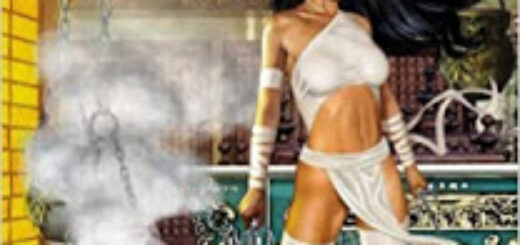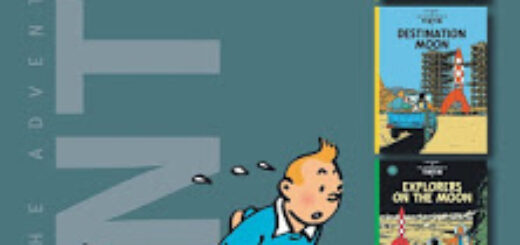Making Friends: Back to the Drawing Board by Kristen Gudsnuk
Hey! Remember when I said that I thought Kristen Gudsnuk’s middle-grade graphic novel Making Friends was a lot of fun, but that I missed the random background goofiness in the world that Gudsnuk brought to her previous book (for adults, as much as any book about superheroes is) Henchgirl ? Sure you do!
Well, Gudsnuk had a sequel to Making Friends a couple of years ago – I just found out about it recently, since I guess I don’t spend as much time keeping track of comics for middle-graders as I should – and I’m happy to report that Making Friends: Back to the Drawing Board shoves the Weird Stuff meter way over into the red zone before it’s done, in a very integrated and fun way. So I do hope to keep using Gudsnukian as an adjective and looking forward to the day when everyone does.
Making Friends followed seventh-grade motormouth Dany – seriously, she’s one of those people (I was intermittently one of them at a slightly later age) who cannot shut up to save their lives even though she knows she’s saying things the wrong way – as she adjusted to life in middle school, where her old friends had a completely different schedule. She thought her life would be perfect if she just had one really good best friend, so, when a magic sketchbook fell into her life from her deceased Great-Aunt Elma, she made herself the perfect friend, Madison Fontaine.
(See my post on the first book for more on where it went from there.)
It’s now a little later in the school year: there’s still a gaping hole in the gym ceiling from , and Dany has been using her reality-warping powers in lots of ways, none of which could ever backfire on her…as far as she’s ever foreseen. But Madison is now even better friends with Cara McCoy , another cheerleader, and Cara is not Dany’s biggest fan. Cara isn’t a “mean girl,” though she does get mean in the ways middle-schoolers do. Honestly, it’s pretty clear than Dany can be annoying regularly, and is exhausting nearly all the time.
So Dany thinks: I just need to use the notebook again, to make things better. I’m too busy and too lazy to get everything done – what if there were two of me? So she uses the notebook to create “Cloney,” a version of herself with a ponytail who lives in a “Pikkiball.” And it actually seems to go OK at first: the two Danys get along with each other, Cloney is happy to take original Dany’s place at school, and nobody is an evil twin or from the dimension of death.
But there’s other stuff going on in the background. Dany’s parents have mysteriously won the lottery. Her mother has lost a lot of weight suddenly. Some other relatives, we see later, have had equally surprising life changes. All soon after Great-Aunt Elma passed and her stuff was bequeathed to her family – interesting!
Gudsnuk doesn’t underline that; the reader has to pick up on it. Or maybe it’s that Dany doesn’t pay much attention to it, since she’s self-absorbed in the ways only a twelve-year-old can be, and the book is from her point of view.
But Back to the Drawing Board is a book where things get even nuttier than in the first book. It builds slowly at first, but the back half of this one is full of all kinds of weird magical powers and events: it is (he said approvingly) deeply Gudsnukian and lots of fun. There is an even bigger magical conflict at the end of this book, and, this time, it’s not all Dany’s fault – though she and her friends do need to be the ones to make everything right.
Gudsnuck has a slightly looser line here than in the previous book, as if she’s drawing at white-hot speed and trying to get to all of the good stuff in her head. I found it a bit too loose here and there, but it works almost all the time. And her people are energetic to a fault: she’s particularly good at a cartoony open-mouth pose when they run into yet something else bizarre and unexpected.
Obviously, the core audience for this book is middle-school girls. But I’m about as far from that demo as you can get, and I’m looking forward to Book Three later this summer, so take that as a recommendation. If you’re an adult, I’d still start Gudsnuk with Henchgirl, but, if you like that, you’ll get a hoot out of these books, too.
![]()
![]()
Reposted from The Antick Musings of G.B.H. Hornswoggler, Gent.
































































